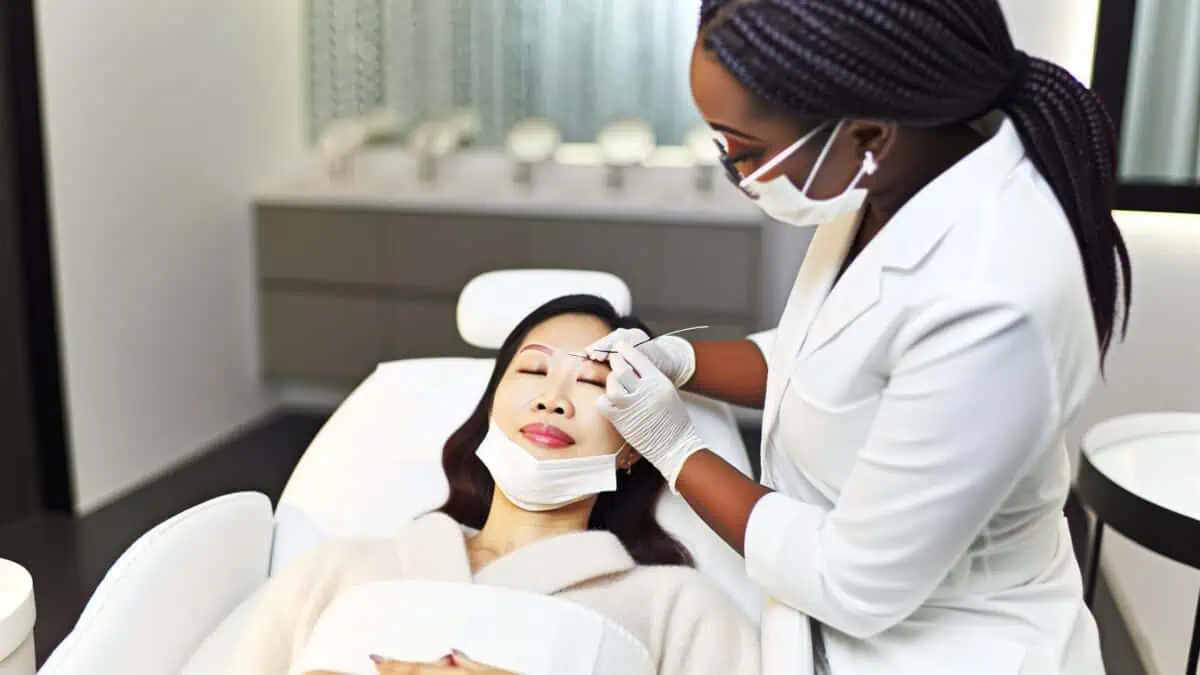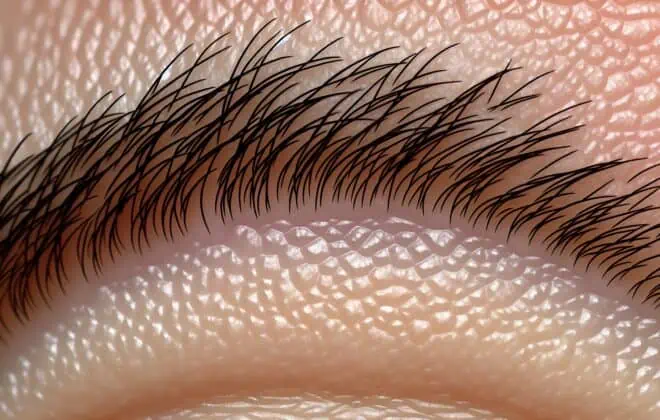Botox Meet Brows: Navigating Eyebrow Threading After Botox Procedures
In the world of beauty and aesthetics, two procedures that often go hand-in-hand are Botox and eyebrow threading. Botox, a procedure that reduces fine lines and wrinkles, and eyebrow threading after Botox, an effective way of shaping and grooming eyebrows, can complement each other well. However, understanding how to navigate these two procedures together is crucial to achieving optimal results and preventing potential complications.
Key Takeaways
Wait a minimum of 2 weeks between Botox and threading treatments.
Seek advice from an aesthetician to ensure safe execution and best results.
Take necessary precautions post-threading, such as avoiding skincare products and sun exposure.
Understanding the Timing: When to Thread After Botox
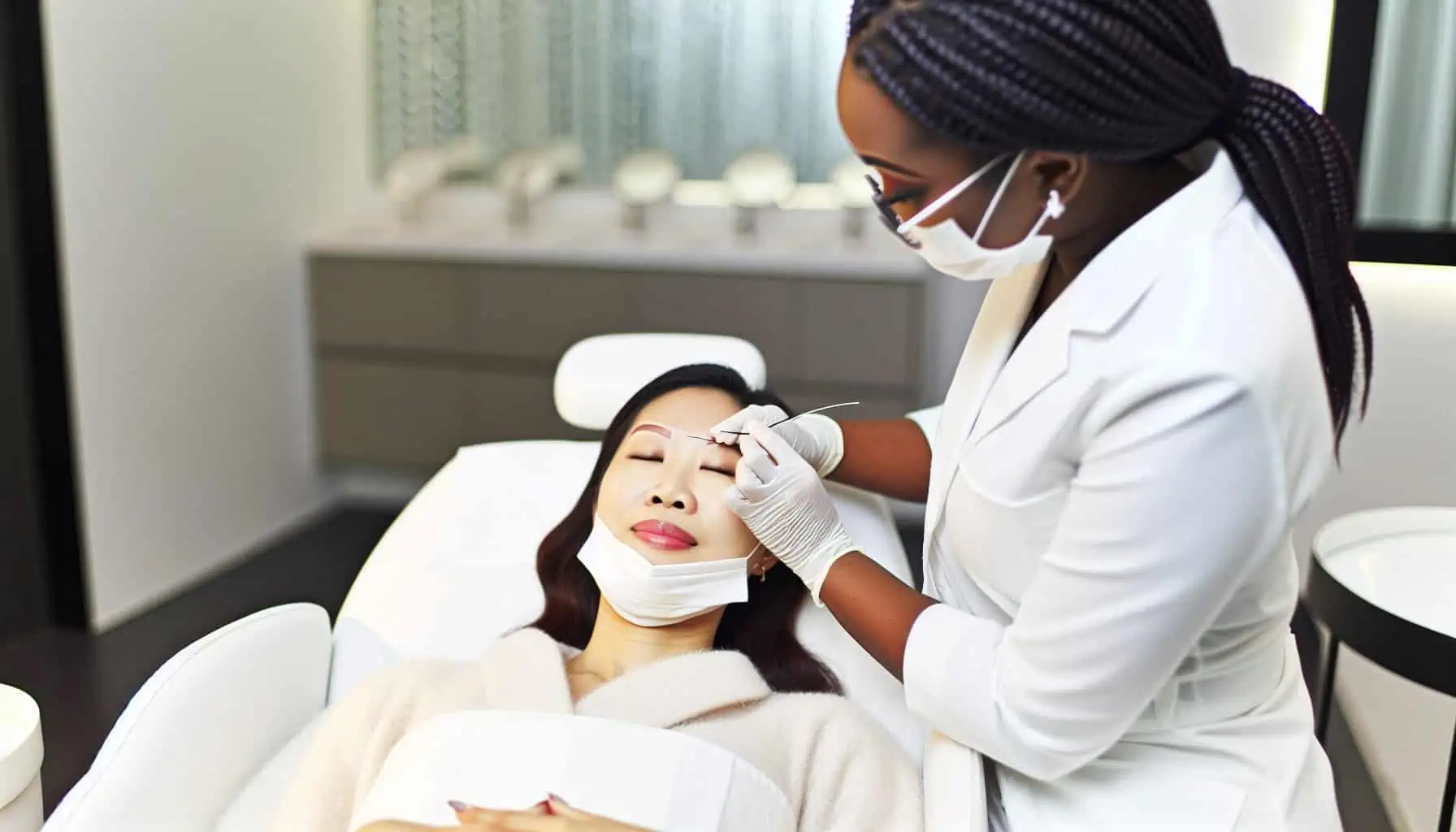
Considering the timing of threading after Botox is vital. It is generally advised to wait a minimum of 24 hours after Botox injections before proceeding with eyebrow threading. This waiting period helps to reduce the risk of complications such as bruising, swelling, and the unintended movement of Botox from the targeted area.
However, the optimal duration between Botox and threading may vary based on individual factors. For instance, the strength of the muscles being treated or the individual’s unique characteristics, such as their skin type or age, can influence the ideal wait time. Hence, seeking personalized advice from a medical professional is recommended.
The Ideal Wait Time
Although a minimum waiting period of 24 hours is often suggested, a gap of typically 2 weeks between Botox and threading is commonly recommended. This extended period allows the Botox to settle effectively into the muscles, reducing the likelihood of post-procedural complications such as swelling or trauma.
Also, some studies recommend the following precautions after getting Botox:
Wait at least 24 to 48 hours before threading
Avoid wearing makeup during this time
This minimizes risks such as swelling and allows the treatment to take full effect.
Risks of Premature Threading
Threading too soon after Botox can elevate the likelihood of experiencing complications and achieving suboptimal results. The motion involved in the threading procedure can lead to heightened blood circulation in the treated area, potentially causing the Botox to spread to unintended areas and modify the intended effects on facial features.
Moreover, potential complications that may arise from threading too soon after Botox include a ‘frozen’ facial appearance, droopy eyelids, and a reduction in the overall intended effect of the Botox treatment. For this reason, enlisting the services of an experienced technician who can effectively remove stray hairs and mitigate potential problems is always suggested.
The Impact of Botox on Eyebrow Treatments
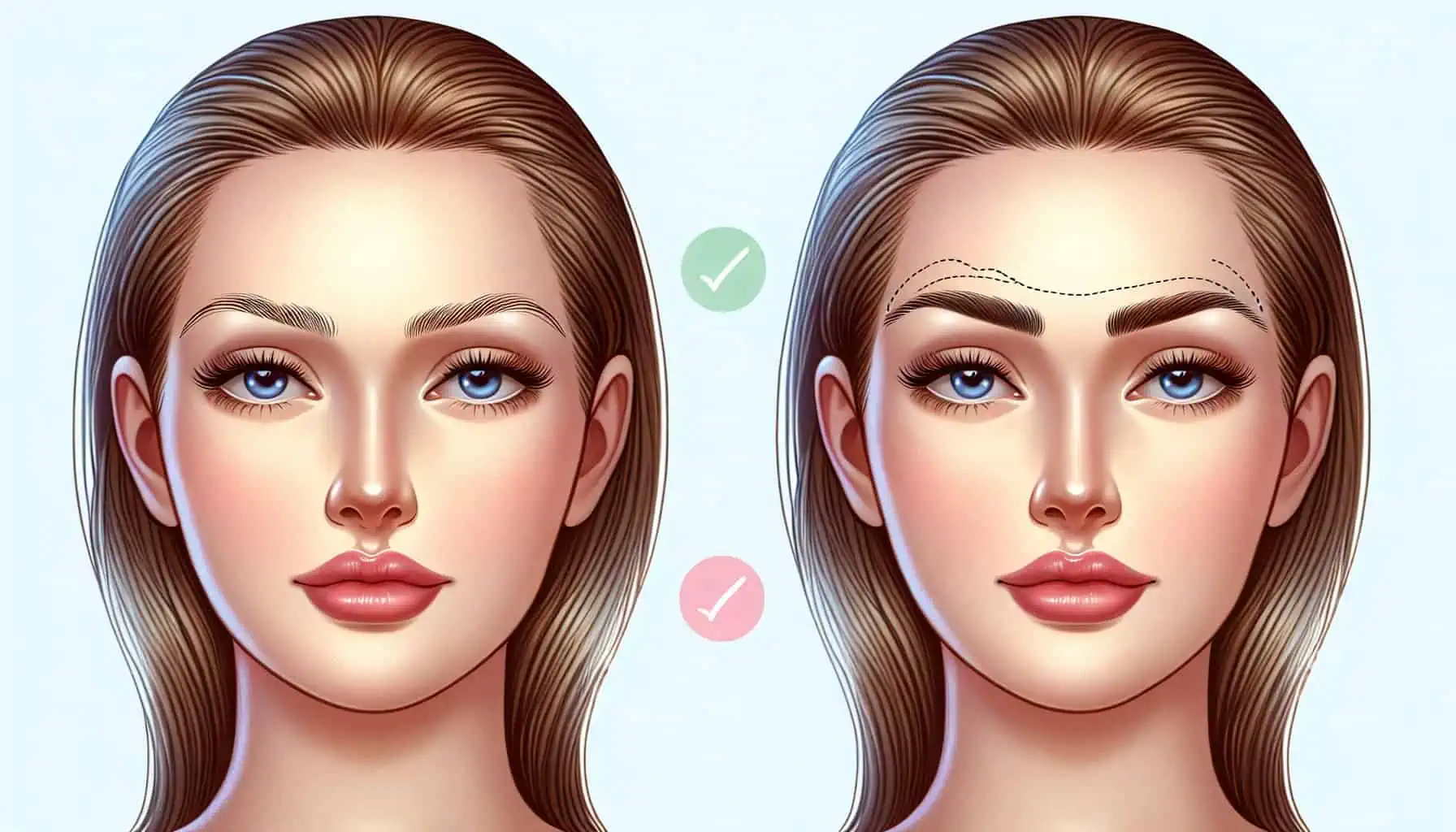
Botox can significantly impact eyebrow treatments, particularly when it comes to shaping and grooming eyebrows. For instance, individuals may observe changes such as heaviness, drooping, or altered shape of their eyebrows after receiving Botox treatment, especially when eyebrows begin to settle after the procedure.
Additionally, Botox can alter the appearance of eyebrows and the upper lip area by:
Elevating drooping eyebrows
Diminishing the appearance of upper eyelid hooding
Eradicating forehead creases
Evening out wrinkles
Hence, comprehending the impact of Botox on eyebrow treatments is crucial for attaining your desired eyebrow shape and appearance.
Preserving Your Aesthetic Treatment Results
To maintain the results of your Botox, it’s important to avoid threading or other eyebrow treatments too soon after the procedure. Threading the eyebrows immediately after receiving Botox can pose potential risks, including:
The migration of Botox into unintended areas
Alterations in brow shape caused by the pulling and tautness of the skin during threading
An elevated likelihood of experiencing pain, swelling, and bruising.
Furthermore, the use of threading after Botox has the potential to influence the aesthetic results. Some individuals may experience a pulling sensation due to the use of barbed threads, which typically resolves within a two-week period. As such, it is highly suggested to consult a professional who can evaluate any concerns and help determine the most optimal strategy to preserve the results of Botox.
Adjusting Eyebrow Threading Techniques
Aesthetic professionals may need to adjust threading techniques to accommodate the effects of Botox on the skin and muscles. It is important for threading professionals to avoid pulling the skin too tightly when adjusting their techniques for eyebrows after Botox. This can help prevent migration of the Botox into unintended areas.
Moreover, it is recommended to communicate with your aesthetician or threading professional about your recent Botox treatment and your skin type, such as oily skin, to ensure they are aware and can adjust their technique accordingly. This is imperative for maintaining the aesthetic outcomes of your Botox treatment.
Combining Botox and Eyebrow Threading: A Guide for Full Eyebrows
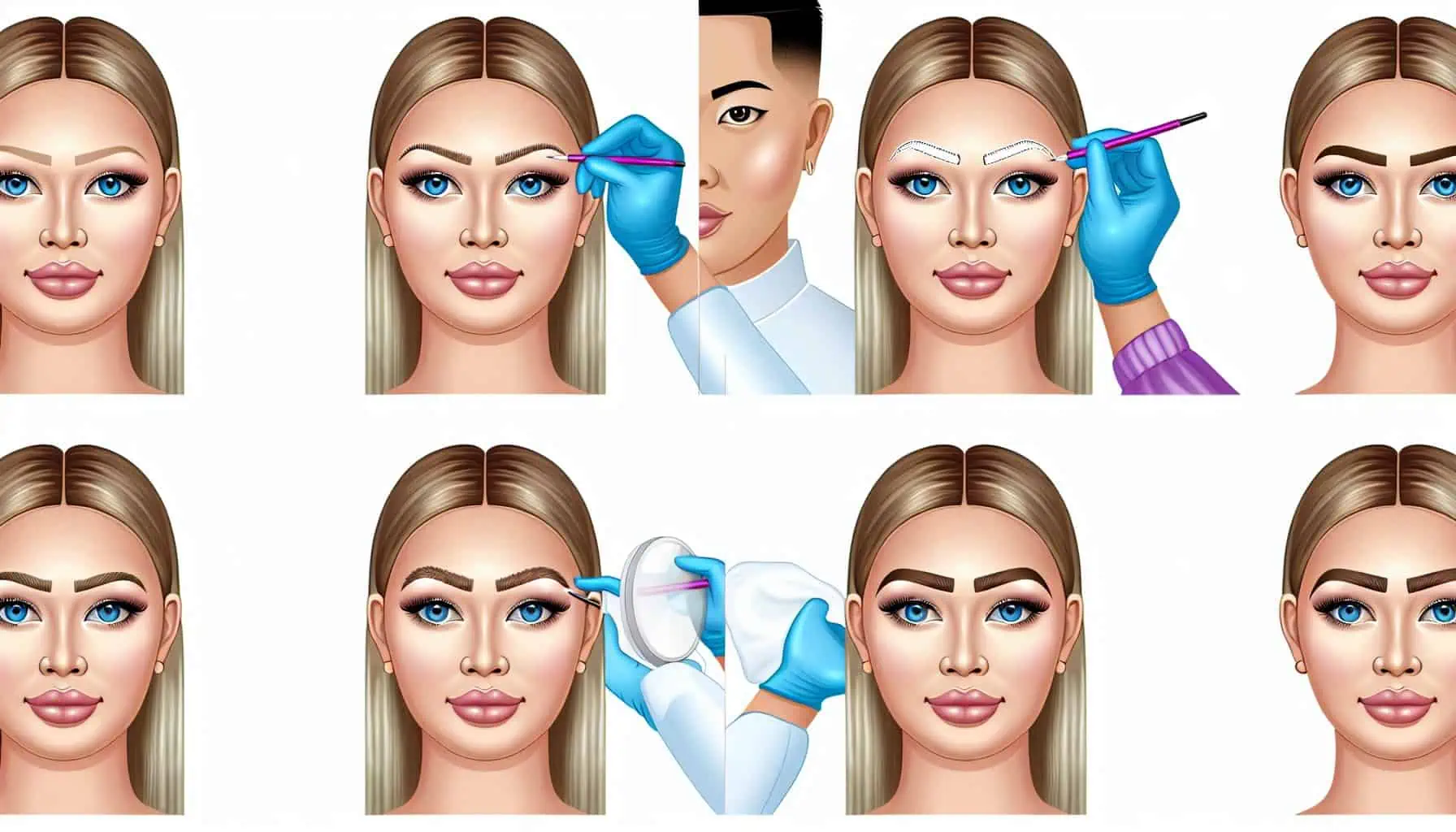
For those who wish to achieve full, well-groomed, and attractive eyebrows, combining Botox and eyebrow threading can be an effective strategy. However, this combination requires a careful approach to ensure optimal results and prevent potential complications.
Adhering to a specific order is paramount when intertwining Botox and eyebrow threading. The optimal sequence is to conduct eyebrow threading first and then wait a minimum of 24 hours before receiving Botox injections. This allows the Botox to settle effectively and reduces the likelihood of complications such as swelling or trauma.
Sequential Approach to Beauty Treatments
When merging Botox and eyebrow threading, a step-by-step approach to beauty treatments is required. It is advisable to wait a minimum of 2 weeks after Botox injections before undergoing eyebrow threading to allow the treatment to settle. To prevent complications, it is important to refrain from touching or massaging the treated areas for approximately 6 hours after injections.
Moreover, it’s imperative to abstain from excessive touching or massaging of the treated areas for about 6 hours post-injections, and to keep the area clean and devoid of chemicals and heat post-threading. Adhering to these guidelines can help ensure the effectiveness and longevity of your Botox treatment.
Eyebrow Threading Considerations for Sensitive Skin
While threading is considered a suitable option for individuals with sensitive skin, certain considerations must be taken into account. For instance, due to its less invasive nature compared to waxing, threading provides precise results, making it an ideal choice for those with sensitive skin. Moreover, threading serves as a good alternative for individuals using prescription acne medications, as the skin in those areas is thinner and more sensitive.
However, despite its suitability for sensitive skin, threading may not be appropriate for all individuals. Some people with sensitive skin may still experience mild pain, stinging, or post-procedure side effects. Hence, it is always suggested to consult a professional to ascertain the most suitable eyebrow treatment for your skin type.
Gentle Threading Practices
Adopting gentle threading practices is essential for those with sensitive or dry skin, especially when aiming to develop stray hairs. Threading professionals can minimize irritation for sensitive skin by employing techniques that do not pull at the skin, ensuring proper hygiene, and targeting only the hair while leaving the surrounding skin untouched.
Furthermore, following the process of threading, individuals with sensitive skin are advised to utilize calming products such as witch hazel, aloe vera gel, or cold compresses to alleviate any discomfort and reduce irritation. These gentle practices can help ensure a smooth threading experience, even for those with sensitive skin.
Post-Threading Care Following Botox
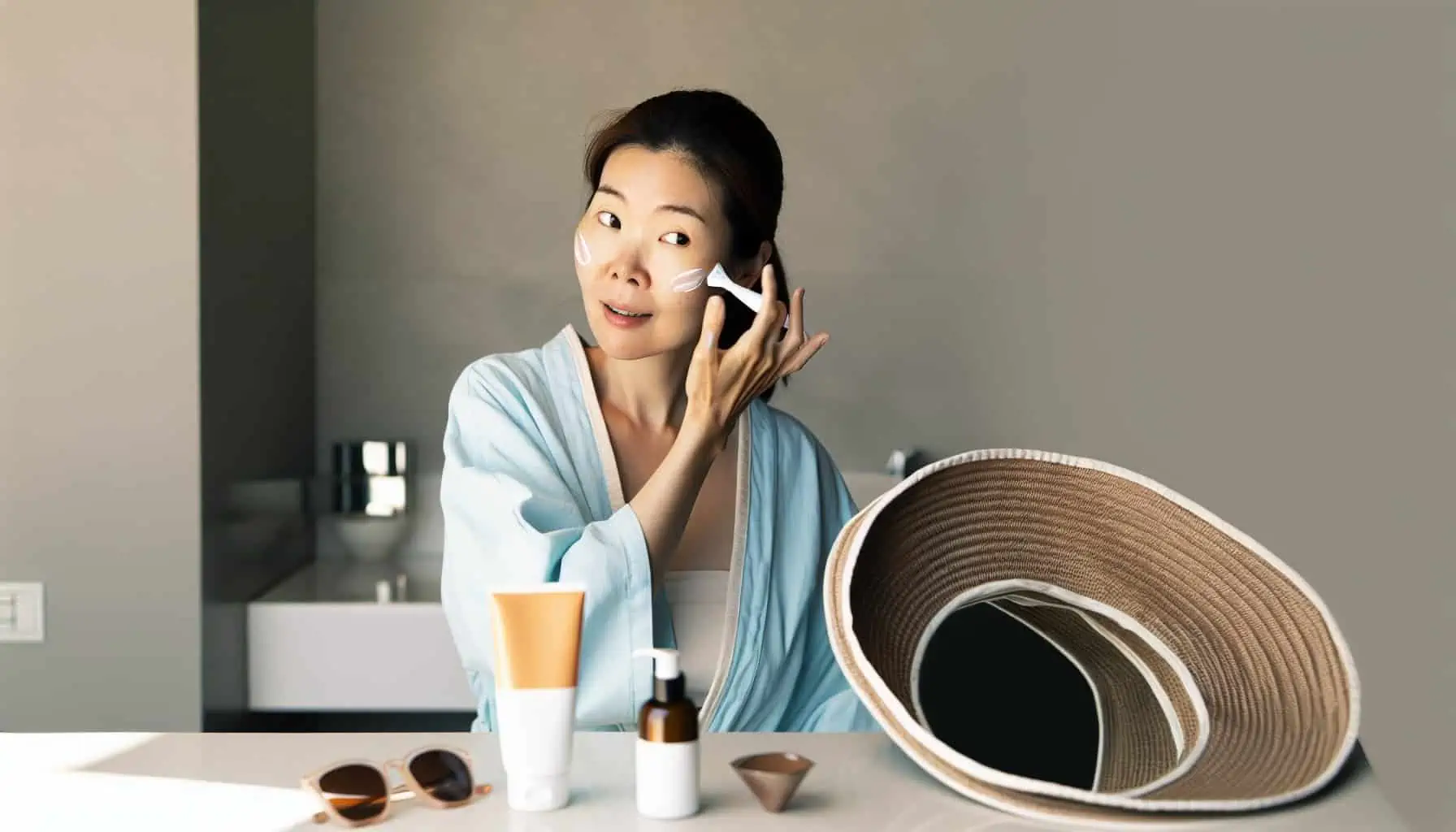
Taking care post-threading holds equal importance to the threading process itself, particularly following semi permanent treatment like Botox. For instance, it is advised to refrain from using skincare products such as moisturizers, serums, or prescription-grade solutions. Moreover, it is recommended to avoid overheating activities like strenuous exercise, hot showers, saunas, or hot tubs for at least a week.
Furthermore, sun exposure has the potential to cause redness, bruising, discoloration, swelling, and increased sensitivity of the skin after threading and Botox treatments. Consequently, it is vital to protect the skin from sun exposure by applying sunscreen and limiting extended exposure to maintain a consistent pigmentation shade.
Avoiding Harsh Beauty Habits
For optimal results from your threading and Botox treatments, it’s recommended to steer clear of harsh beauty habits. This includes:
Sleeping on your side or stomach
Deciding to wear makeup
Engaging in vigorous exercise
Applying excessive pressure to the treated area
Moreover, the use of aggressive skin care products subsequent to threading and Botox treatments can result in rashes, irritation, and other allergic reactions. So, it is always advised to use gentle skincare products after these procedures. This involves using a gentle cleanser for facial washing and mild, non-abrasive products for cleansing.
Sun Protection Strategies
Protecting from sun exposure forms a vital part of post-threading care, particularly after Botox treatments. The application of sunscreen following Botox and threading treatments is crucial in safeguarding the skin against sun damage and in preserving the outcomes of the procedures.
In addition, it is recommended to apply sunscreen to the treated area whenever it is exposed to sunlight after undergoing Botox and threading, in order to ensure adequate protection. The recommended SPF level for maintaining the effects of Botox and threading procedures is SPF 30 or higher.
Can Threading Affect Botox Longevity?
You might be wondering if threading can affect the longevity of Botox. The duration of Botox treatments can be influenced by several factors, including:
the specific muscle being treated
the strength of the muscle
the dosage of Botox administered
the individual’s unique characteristics
Yet, one should note that regular threading aids in preserving Botox by providing additional support to the treated regions. Threading entails injecting the muscle along its natural path, which can aid in uniformly paralyzing the associated muscle. This can bolster the efficacy and duration of the Botox injectable treatments.
Factors Influencing Botox Durability
Several factors contribute to the duration of Botox’s effect. The main factors that influence how long Botox effects last include:
Age
Dosage
Treatment area
Metabolism
Frequency of treatments
Muscle strength and size
Precision of application
Patient activity level
For instance, the age of an individual can have a substantial impact on the durability of Botox treatments. In older individuals, the effects of Botox may have a shorter duration due to the thinning and reduced elasticity of the skin. It is particularly crucial to tailor the dosing of Botox for optimal treatment outcomes across various age brackets.
Maintaining Botox With Regular Beauty Routines
Regular beauty routines, including threading, can help maintain the appearance of Botox-treated areas and dermal fillers. Threading can prompt collagen regeneration, leading to further enhancement of the skin’s appearance and contributing to the comprehensive maintenance of the Botox results.
However, it’s also important to take precautions when incorporating threading into beauty routines for Botox-treated skin. For instance, it’s essential to refrain from touching or massaging the treated areas for approximately 6 hours after injections. This can help ensure the effectiveness and longevity of your Botox treatment.
Expert Tips for Eyebrow Threading After Botox
For best results, following expert tips is suggested when threading eyebrows post-Botox. Here are some tips to consider:
Seek advice from an aesthetician before undergoing eyebrow threading following Botox treatment. They can offer personalized guidance and recommendations to ensure precision in treatment.
Inform the aesthetician about your recent Botox treatment and any changes in brow shape or position. This will help them accommodate these changes during the threading process.
Follow the aesthetician’s instructions and recommendations to minimize the potential for complications and achieve the desired results.
Remember, seeking professional advice is important to ensure a safe and effective eyebrow threading experience after Botox treatment.
Furthermore, it’s recommended to wait a minimum of 2 weeks after receiving Botox injections before getting your eyebrows threaded. This waiting period is advised to allow the treatment to settle and reduce the risk of complications. Adhering to these expert tips can lead to appealing, well-groomed eyebrows without undermining the efficiency of your Botox treatment.
Consulting With Aestheticians
When planning to thread eyebrows post-Botox, consultation with a professional aesthetician is crucial. They can offer personalized guidance and recommendations to ensure that the threading is carried out effectively and safely, without impacting the results of the Botox treatment.
Moreover, an aesthetician can offer advice on proper aftercare for your cosmetic treatment, including avoiding pressure on the treated area and refraining from applying makeup for a certain period of time. Such professional advice can be invaluable in achieving the best results from your Botox and threading treatments.
Summary
In conclusion, understanding how to navigate eyebrow threading after Botox is crucial to achieving optimal results and preventing potential complications. By following a sequential approach to beauty treatments, implementing gentle threading practices, and consulting with a professional aesthetician, you can maintain your Botox results and achieve attractive, well-groomed eyebrows. Remember, it’s all about taking the right steps at the right time.
Frequently Asked Questions
Is it OK to move eyebrows after Botox?
Raising your eyebrows or frowning after Botox injections can help the product get to work, however activities that spike your blood pressure should be avoided. It is OK to move your eyebrows after Botox.
Can I get my eyebrows threaded after a chemical peel?
Threading can be performed shortly after a chemical peel.
How can a professional aesthetician assist in achieving optimal results for eyebrow threading following Botox treatment?
A professional aesthetician can provide tailored advice to ensure threading is performed correctly and will not interfere with the Botox results.
Ready to Book?
With our skilled brow technicians at Eye Adore Threading we can customize your brows to suit your style and your face. Book now here. If you would like to know more about eyebrow threading please read Why Is Eyebrow Threading Important For Your Face? and Is Threading Safe? Find Out
We hope you enjoyed this article. Locations and hours of our eyebrow threading salons are located here. You can also follow us on instagram.
Tags In
Categories
- Accutane (1)
- Beauty (37)
- Henna (5)
- Inspiration (5)
- Lamination (4)
- Lashes (6)
- Men (4)
- Safety (10)
- Skin Care (3)
- Threading (10)
- Tint (5)
- Tips & tricks (27)

